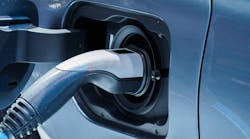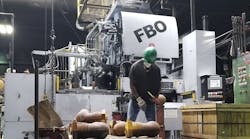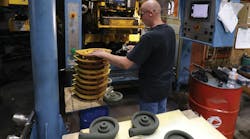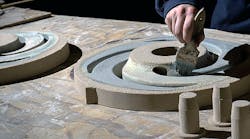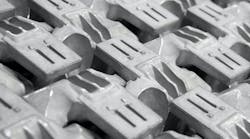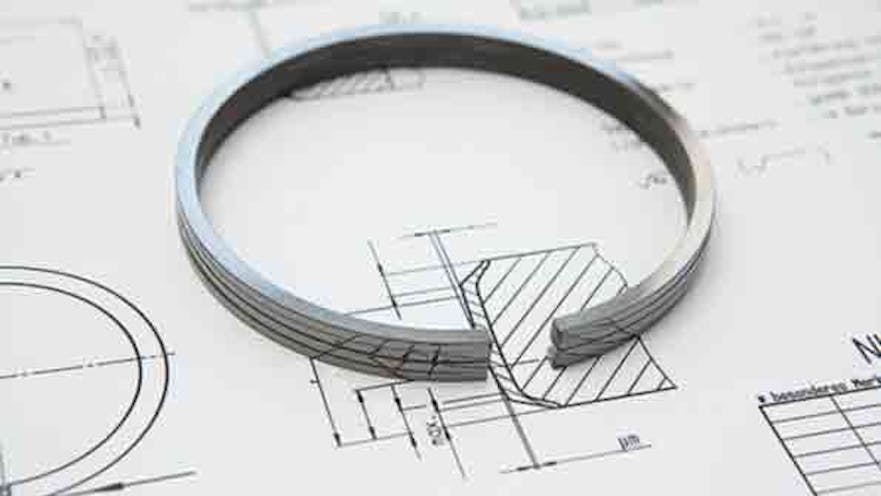Trials show up to 20% reduction in oil consumption and extended liner life for typical two-stroke diesel engines
Federal-Mogul Powertrain detailed a new piston ring it has developed for two-stroke diesel engines, noting the products reduce oil consumption and marine pollution by cutting significantly the quantity of lubricant the engines use.
The patented surface topography of the new eWAVE® rings was designed to distribute oil more evenly around the cylinder bores, so less oil is used to protect the cylinder.
"eWAVE is the first ring that disperses oil around the bore in a homogeneous layer, protecting against local oil film breakdown, improving the sealing of combustion gases, reducing wear and ensuring more uniform liner temperatures," according to Richard Mittler, senior expert manager, Analysis and Product Development, Technology, Rings & Liners.
"This means the amount of oil injected into the cylinder can be greatly reduced and, because two-stroke engines expel their lubricant in the exhaust, less oil means lower carbon emissions as well as reduced operating costs."
Conventional two-stroke piston rings are designed according to principles similar to those used in 4-stroke engines, in which oil flows from the crankcase around the entire circumference of the ring. However, in two-stroke engines the lube oil is sprayed against the cylinder liner in proportion to the engine load. This feed oil is not uniformly distributed on the cylinder wall.
To ensure a safe minimum coverage of all areas of the liner, surplus oil is injected in order to compensate for the uneven distribution. Because there is no mechanism to distribute the oil circumferentially around the bore, much of the surplus is pushed downward toward the ports, so that approximately 30-40% of the oil supplied passes through to the exhaust without performing any useful function.
The geometry of the eWAVE piston ring creates a circumferential pressure difference that generates controlled oil flow around the bore as the piston reciprocates, improving the uniformity of the oil film. This is done by varying the point about which the ring pivots in its groove as the piston reverses direction. Tests have shown that the eWAVE ring distributes oil over an area about 10 times as large as that of conventional ring profiles, which generate less than 1% of their oil flow in a circumferential direction.
"Long term trials since 2013 in a number of vessels with different oil injection technologies have confirmed the economic and environmental advantages of eWAVE rings," according to Mittler. "In over 8,000 hours of testing, we have seen improved wear resistance while reducing oil consumption by up to 20%, helping to reduce operating costs while improving the marine environment."
The detail of the eWAVE design can be optimized to suit individual types and arrangements of feed nozzle and different engine strokes and operating speeds.

